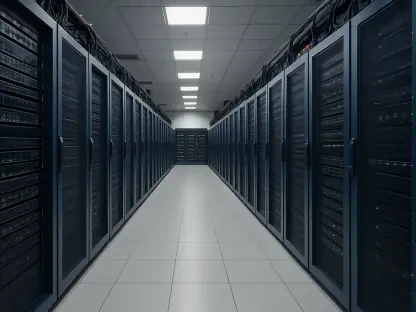Port forwarding is a widely used networking technique that redirects incoming traffic on a specific port to a designated device or application within a local network. This method is particularly prevalent in the physical security industry for IP video systems. However, despite its utility, port forwarding introduces significant cybersecurity risks by exposing internal network devices to the internet, creating potential gateways for cyberattacks. This article explores the inherent risks of port forwarding and presents secure alternatives to mitigate these risks effectively.
Understanding the Risks of Port Forwarding
Security Vulnerabilities and Unauthorized Access
Port forwarding can significantly heighten security risks by creating an entry point that bypasses firewalls, allowing potential attackers to directly access internal devices or applications. This exposure increases the likelihood of unauthorized access, especially if the connected device has weak credentials or unpatched software vulnerabilities. Cybercriminals can exploit these weaknesses to gain control over the network, leading to data breaches and other malicious activities.
Moreover, once attackers gain entry through a forwarded port, they can pivot within the network to compromise other devices and systems. This lateral movement allows them to escalate privileges, extract sensitive information, or even deploy malware. The initial vulnerability created by port forwarding becomes a conduit for widespread network exploitation. Therefore, understanding these risks underscores the importance of adopting robust cybersecurity measures to safeguard against potential breaches and unauthorized access.
Data Breaches and System Exploitation
One of the primary concerns with port forwarding is the potential for data breaches. When internal devices are exposed to the internet, sensitive information can be intercepted by attackers. Additionally, unpatched software vulnerabilities can be exploited, allowing cybercriminals to infiltrate the system and compromise its integrity. These vulnerabilities often result from outdated firmware or software that hasn’t been updated with the latest security patches. Attackers constantly search for these weak points to launch their attacks, making regular updates and maintenance critical.
Furthermore, breaches and exploitation of systems can lead to significant financial and reputational damage. Sensitive data loss can disrupt operations, lead to customer trust erosion, and incur hefty fines for non-compliance with data protection regulations. The threats posed by data breaches and system exploitation are vast and ever-evolving, urging the need for preemptive measures to secure network environments. Organizations must prioritize cybersecurity strategies to mitigate these risks effectively, ensuring the protection of their digital assets and overall operational integrity.
Implementing Advanced Security Measures
Strong Access Controls and Multi-Factor Authentication
To mitigate the risks associated with port forwarding, it is crucial to implement strong access controls. Multi-factor authentication (MFA) is widely recommended to restrict unauthorized entry. By requiring multiple forms of verification, MFA adds an extra layer of security, making it more difficult for attackers to gain access. Additionally, using strong credentials and limiting access to specific IP addresses can further enhance security.
Integrating MFA involves deploying at least two separate factors for authentication—often a combination of something the user knows (password), something the user has (security token or smartphone), and something the user is (biometric verification). With these layers, even if an attacker manages to obtain the password, they still need the additional verification factor to gain access. Similarly, limiting network access to trusted IP addresses reduces the attack surface significantly, ensuring that only specified, secure endpoints have entry privileges.
Regular Software Updates and Patches
Ensuring that all devices and applications involved in port forwarding are regularly updated with the latest security patches is vital. Outdated software often harbors vulnerabilities that can be easily exploited by attackers. By keeping software up to date, organizations can mitigate the risks of port forwarding and protect their networks from potential threats. Software updates address known vulnerabilities and enhance system security, thus reducing the avenues through which attackers can exploit network defenses.
In addition, automated patch management systems can streamline the update process, ensuring all devices receive timely patches without manual intervention. Such systems can monitor network devices, identify outdated software versions, and deploy necessary updates in real-time. By adopting these mechanisms, organizations not only reinforce their cybersecurity posture but also simplify the intricate process of maintaining up-to-date security across all network components.
Network Segmentation and Secure Alternatives
Network Segmentation for Enhanced Security
Network segmentation involves dividing a network into smaller, isolated segments. This practice helps to confine potential threats to a limited area, preventing them from spreading across the entire network. By isolating critical systems from those facing the public, organizations can minimize exposure and reduce the risk of cyberattacks. Network segmentation is a fundamental strategy for enhancing security and protecting sensitive information.
The approach of segmenting networks can be likened to having multiple secure compartments within a ship; if one compartment floods, it doesn’t sink the entire vessel. Similarly, segmentation ensures that breaches in one network segment do not affect other isolated parts of the network. Implementing segmentation can be achieved through Virtual Local Area Networks (VLANs), firewalls, and access control lists (ACLs), which dictate that only authorized traffic can pass between segments.
Utilizing VPNs and Secure Tunneling Protocols
Virtual Private Networks (VPNs) and secure tunneling protocols offer a safer alternative to direct port forwarding. These methods create secure channels for data transmission, encrypting data packets and limiting direct exposure to the internet. Although VPNs and secure tunneling protocols can entail additional administrative efforts, they substantially enhance security by protecting data in transit and reducing vulnerabilities. Encryption ensures that data remains confidential and intact, even if intercepted during transmission.
VPNs are especially useful for remote access scenarios, allowing employees or devices to connect securely to the internal network as if they were physically present on-site. Secure tunneling protocols like Secure Shell (SSH) and Transport Layer Security (TLS) provide additional avenues for establishing encrypted communication channels. By leveraging these technologies, organizations can significantly reduce the risks associated with exposing internal systems directly to the internet.
Embracing Cloud-Enabled Solutions
Advantages of Cloud-Based Security Solutions
The trend toward cloud-enabled security solutions is prominent in the industry. Cloud applications enable secure inbound connections to on-premise security equipment without necessitating port forwarding. These systems often employ advanced encryption protocols to protect data in transit, reducing IT administrative burdens while fortifying network defenses. By adopting cloud-based solutions, organizations can enhance security and operational efficiency.
Cloud-based security solutions offer scalability and flexibility, allowing organizations to grow their security infrastructure without the constraints of physical hardware limitations. These systems are typically managed by specialized cloud service providers who ensure up-to-date security measures and compliance standards. This external expertise and resource allocation relieve internal IT teams from the complexities of constant monitoring and maintenance, enabling them to focus more on core operational functions.
Reducing Administrative Burdens with Cloud Solutions
Cloud-enabled security solutions not only provide enhanced security but also reduce the administrative workload. These systems offer seamless integration and advanced encryption, ensuring that data is protected without the need for constant monitoring and maintenance. By leveraging cloud technology, organizations can focus on their core operations while maintaining robust cybersecurity measures. Such streamlined approaches translate into cost savings and improved resource allocation.
Moreover, many cloud solutions incorporate automated threat detection and response mechanisms, known as Security Information and Event Management (SIEM) systems. SIEM systems continuously analyze network traffic patterns, identify potential threats, and respond appropriately—often before the threats can cause significant damage. This proactive posture ensures continuous vigilance and an adaptive defense system that keeps pace with emerging cybersecurity challenges.
Cohesive Strategies for Mitigating Cyber Risks
Multi-Layered Security Approach
A multi-layered security approach is essential for mitigating the risks associated with port forwarding. This strategy combines strong access controls, regular software updates, network segmentation, and secure communication protocols to fortify defenses against potential cyber threats. By implementing multiple layers of security, organizations can create a robust defense system that is difficult for attackers to penetrate.
The integration of these measures ensures redundancy—should one layer be breached, the subsequent defensive mechanisms continue to protect the network. The varied nature of these layers addresses different aspects of cybersecurity, from access control to data transmission, thereby covering a broader range of potential threats. This holistic strategy is more effective than relying on a single security measure, providing a comprehensive safeguard for the organization’s digital infrastructure.
Continuous Vigilance and Advanced Security Measures
Port forwarding is a common networking technique that routes incoming traffic on a specific port to a designated device or application within a local network. This method is especially common in the physical security sector for IP video systems. Despite its usefulness, port forwarding poses significant cybersecurity risks by exposing internal network devices to the internet, making them vulnerable to cyberattacks. Hackers can exploit these open ports to gain unauthorized access to the network, potentially compromising sensitive data and system integrity. Furthermore, the practice can serve as a gateway for malware and other malicious activities, putting the entire network at risk.
This article delves into the security concerns associated with port forwarding and discusses effective, secure alternatives to mitigate these risks. For instance, virtual private networks (VPNs) and secure tunneling protocols can provide similar functionality without exposing network devices to potential threats. By using these techniques, organizations can maintain robust security measures while still benefiting from the convenience of remote access to their internal systems.









